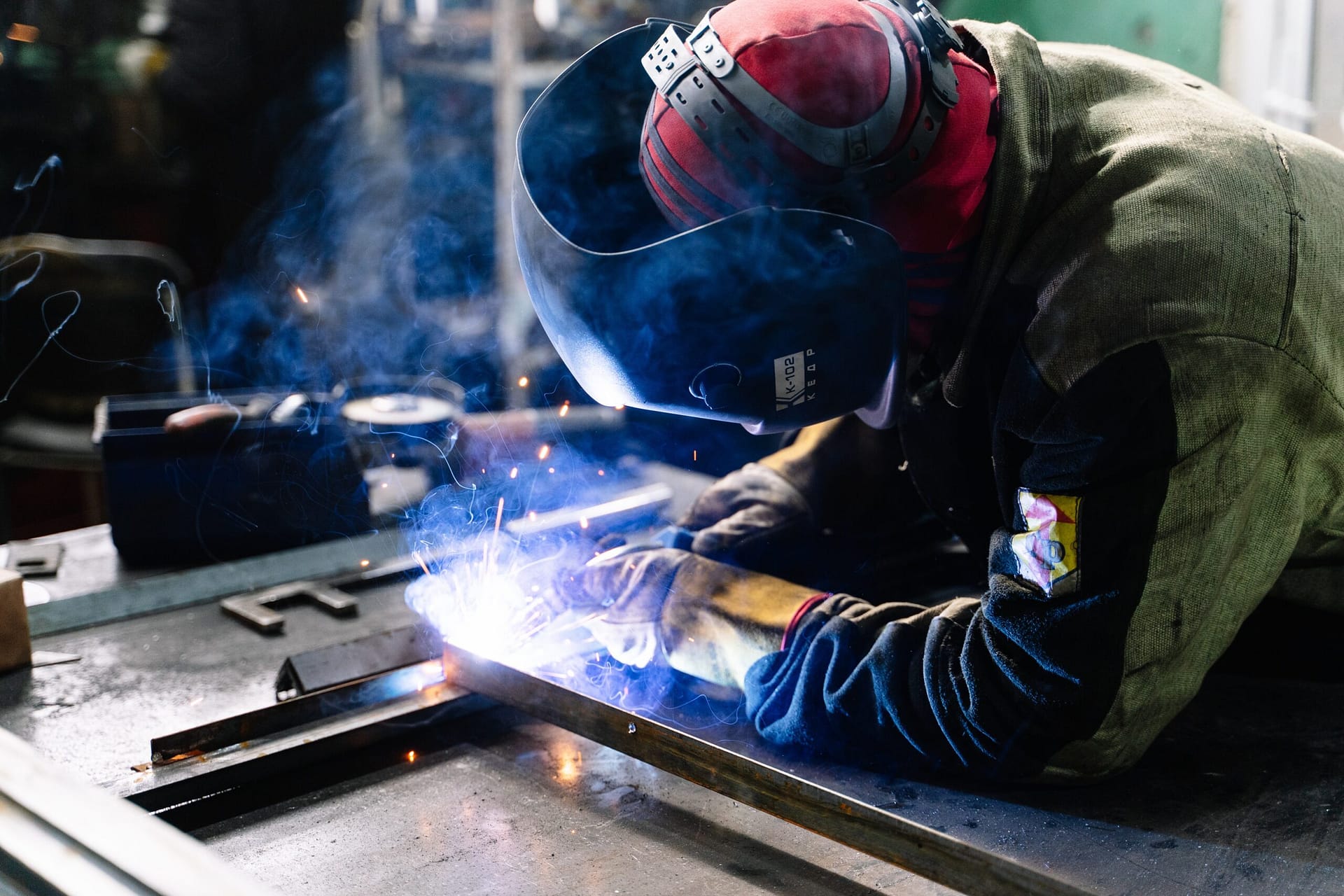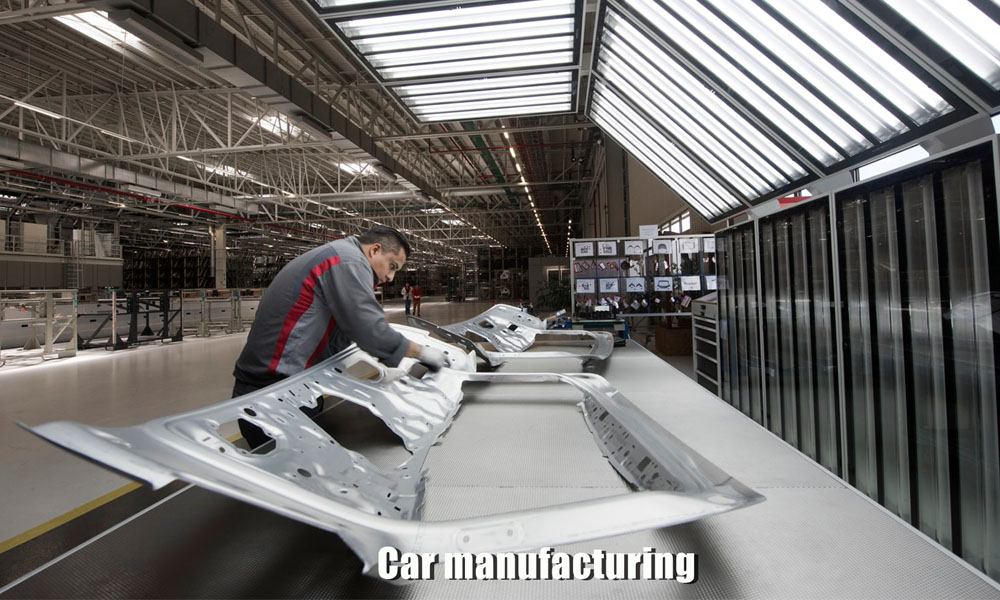The role of heat can do for distortion prevention in Montana Mobile Welding and Repair Fabrication
Common Welding Repair Service Issues and Exactly How to Address Them Properly
Welding fixings typically experience a variety of concerns that can jeopardize the stability of the end product. Typical issues include poor infiltration, porosity, and misalignment, amongst others. Each issue presents special difficulties that require certain approaches for resolution. Understanding these problems is necessary for welders aiming to boost their skills and end results. This conversation will check out these usual welding fixing concerns and effective approaches to address them.
Inadequate Infiltration
Inadequate infiltration takes place when the weld metal fails to completely fuse with the base material, resulting in weak joints and possible architectural failures. This concern often originates from insufficient warm input, inaccurate electrode angle, or inappropriate welding speed. Welders may run into inadequate infiltration because of a mistake of the necessary specifications for a specific material density or type. Furthermore, contamination on the base product's surface area can prevent effective bonding, worsening the trouble. To deal with insufficient infiltration, welders must guarantee appropriate setups on their devices and preserve a clean work surface area. Regular assessment of welds is advised to recognize any type of deficiencies early, permitting timely improvements and the prevention of jeopardized architectural stability in welded assemblies.
Porosity
Porosity is an usual defect in bonded joints that manifests as small gas bubbles trapped within the weld steel. This issue can compromise the stability of the weld, bring about minimized stamina and possible failure under stress and anxiety. Welding. Porosity commonly emerges from contamination, wetness, or improper welding methods, which enable gases to run away into the liquified weld swimming pool. To deal with porosity, welders need to ensure correct surface prep work, maintain a tidy workplace, and utilize appropriate welding criteria. Furthermore, selecting the appropriate filler product and protecting gas can alleviate gas entrapment. Normal assessment and screening of welds can aid recognize porosity early, assuring prompt restorative activities are taken, thus protecting the high quality and integrity of the bonded framework
Misalignment
Misalignment in welding can occur from numerous variables, including incorrect configuration and thermal growth. Comprehending the root triggers is vital for effective resolution. A number of correction methods are available to realign components and ensure architectural stability.
Root causes of Misalignment
Welding misalignment typically comes from a selection of underlying issues that can jeopardize architectural honesty. One primary cause is inappropriate fit-up of elements prior to welding, which can cause spaces and unequal surfaces. Variations in thermal development throughout the welding procedure can also cause distortion, especially if the products being signed up with have various coefficients of development. Additionally, insufficient fixturing and clamping might fall short to hold parts securely in area, causing movement throughout welding. Poorly kept devices, including welding equipments and devices, may present disparities in the weld bead, more adding to imbalance. Driver mistake, stemming from insufficient training or experience, can likewise play a substantial duty in creating misaligned welds.

Modification Strategies Offered
Attending to imbalance successfully requires a mix of corrective methods customized to the specific problems at hand. One usual method is making use of jigs or components to hold components in the proper placement throughout welding, making sure regular placement. Furthermore, pre-heating the materials can aid reduce distortion and improve fit-up. For considerable imbalance, mechanical adjustment techniques, such as making use of hydraulic jacks or clamps, can be utilized to correct the placement before welding. Post-weld warmth therapy may also be essential to ease stresses brought on by imbalance. Careful evaluation and modification during the arrangement phase can stop misalignment problems from becoming considerable issues, promoting a smoother welding procedure and improving general structural integrity.
Distortion
Distortion is a common challenge in welding that can arise from numerous variables, consisting of unequal cooling and heating. Recognizing the reasons for distortion is vital for applying effective prevention strategies. Resolving this problem not just improves architectural honesty yet also improves the overall top quality of the weld.
Reasons for Distortion
When subjected to the intense heat of welding, products usually undergo changes that can lead to distortion. This sensation primarily occurs from thermal development and tightening throughout the welding procedure. As the weld area warms up, the product increases; upon air conditioning, it acquires, which can produce interior stress and anxieties. Furthermore, uneven home heating across a work surface can exacerbate these tensions, resulting in bending or bending. The type of material also plays a considerable duty; steels with differing thermal conductivity and coefficients of growth might respond in different ways, resulting in uncertain distortions. Inadequate joint design and poor fixturing can add to misalignment during welding, enhancing the probability of distortion. Recognizing these reasons is crucial for effective welding repair and prevention techniques.
Prevention Techniques
Reliable prevention techniques for distortion throughout welding concentrate on controlling heat input and guaranteeing appropriate joint layout. Maintaining a regular heat input helps to lessen thermal development and tightening, which can bring about distortion. Making use of strategies such as pre-heating the workpiece can additionally reduce the temperature level slope, advertising uniform heating. Furthermore, selecting ideal joint designs, such as T-joints or lap joints, can improve security and minimize anxiety concentrations. Executing proper fixturing to safeguard the work surfaces in position additionally help in maintaining placement during the welding process. Lastly, staggered welding sequences can distribute warm a lot more equally, protecting against local distortion. By using these approaches, welders can substantially reduce the possibility of distortion and boost the general high quality of their welds.
Cracking
Fracturing is an usual issue come across in welding fixings, commonly resulting from different factors such as incorrect air conditioning rates, product selection, or insufficient joint preparation. The occurrence of cracks can significantly endanger the integrity of the weld, causing possible failings during procedure. To address this problem, welders must initially examine the origin creates, making certain that materials work and appropriately picked for the particular application. Furthermore, regulating the air conditioning rate during the welding process is vital; quick cooling can generate stress and anxiety and result in breaking. Appropriate joint style and prep work additionally contribute to minimizing the risk. Implementing these methods can improve weld top quality and longevity, inevitably reducing the chance of splitting in finished weldments.

Insufficient Fusion
A substantial issue in welding fixings is incomplete blend, which occurs when the weld steel does not properly bond with the base material or previous weld passes - Montana Mobile Welding and Repair Fabrication. This flaw can cause weaknesses in the joint, potentially endangering the integrity of the bonded structure. Factors adding to insufficient fusion consist of not enough warmth input, inappropriate welding method, and contamination of the surface areas being signed up with. To address this concern properly, welders should ensure appropriate pre-weld cleansing and surface area preparation, in addition to change their welding parameters to achieve sufficient penetration and fusion. Routine assessment during the welding process Montana Mobile Welding and Repair Welding can likewise aid identify insufficient blend early, enabling timely corrective steps to improve the total top quality of the weld
Overheating
While welding fixings can boost architectural stability, overheating presents a considerable difficulty that can result in material degradation. Excessive warmth during welding can modify the mechanical residential or commercial properties of metals, causing reduced stamina, enhanced brittleness, and bending. This sensation is particularly crucial in high-stress applications where architectural dependability is vital. Identifying getting too hot can entail aesthetic evaluations for discoloration or distortion, along with keeping an eye on temperature level during the welding procedure. To minimize the threats connected with getting too hot, welders ought to utilize appropriate strategies, such as regulating warm input, adjusting travel speed, and using ideal filler materials. Furthermore, implementing pre- and post-weld warmth therapies can aid restore product buildings and improve the general quality of the fixing, ensuring long-lasting efficiency and security.
Regularly Asked Inquiries
What Are the Typical Signs of a Welding Issue?

Just How Can I Test My Welds for Top quality?
To check welds for high quality, one can use visual inspections, ultrasonic screening, and radiographic methods. Each strategy guarantees architectural honesty, determines problems, and confirms adherence to specified criteria, inevitably enhancing the dependability of the welded joints.
What Safety and security Precautions Should I Take While Welding?
When welding, one need to prioritize safety by using suitable personal safety equipment, making sure proper air flow, securing flammable products away, preserving a clean work space, and knowing surroundings to stop mishaps and injuries.
Can I Fix a Weld Without Renovating the Entire Joint?
Fixing a weld without renovating the whole joint is possible, depending upon the damages (Belgrade Welding). Techniques such as grinding, adding filler material, or making use of a welding process can effectively deal with certain problems while maintaining the bordering structure
What Equipment Are Vital for Reliable Welding Fixes?
Essential tools for efficient welding repairs include a welding maker, cord brush, grinder, protective gear, clamps, and filler materials. Each tool plays a crucial role in making sure top quality and safety and security throughout the repair work process. Porosity typically emerges from contamination, dampness, or inappropriate welding techniques, which allow gases to escape right into the liquified weld swimming pool. Inadequately maintained equipment, including welding machines and tools, might introduce variances in the weld grain, more contributing to misalignment. When subjected to the extreme warm of welding, products commonly undertake modifications that can lead to distortion. Fracturing is a typical problem come across in welding fixings, often resulting from different elements such as inappropriate air conditioning prices, material selection, or insufficient joint prep work. A significant concern in welding repair services is insufficient blend, which happens when the weld metal does not adequately bond with the base material or previous weld passes.